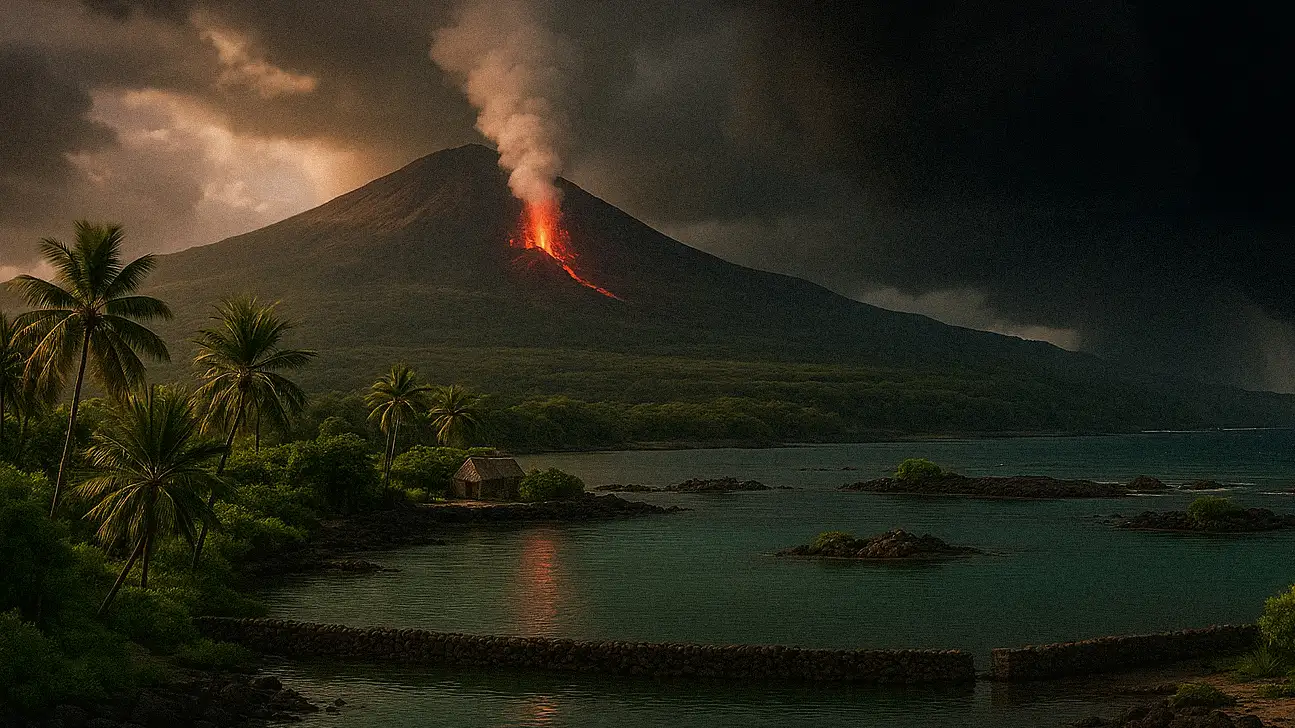HOST Park's Legacy of Innovation and Sustainability
Delve into the inspiring story of HOST Park, where each chapter unfolds groundbreaking strides in technology and eco-friendly practices. Our journey reflects a commitment to pioneering sustainable solutions and fostering a community of innovation. Discover how HOST Park has become a landmark of progress and a beacon for future endeavors, impacting both Hawaiʻi and the global scale.










NELHA Through the Years
Host park's Historic Timeline & Major Milestones
Trace the significant milestones and transformative events in HOST Park's remarkable journey, highlighting its evolution and impact in this insightful timeline.
Trace NELHA Through the YearsHistorical

Pre-HOST Park
The area was once the site of a very large fishpond, Pā’aiea Pond, rumored to be 3.5 miles long and 1.5 miles wide. The pond, immortalized in the Hawaiian proverb “O na hoku o ka lani, o Pā‘aiea ko lalo – The stars are above, Pā‘aiea below”, was covered by a pahoehoe lava flow in 1801.
Learn More About the Land and Its People1970s

1974
Natural Energy Laboratory of Hawaii, operated by University of Hawaii was established as a response to the first oil crisis.
1976
EIS for NELH completed.
1979
Mini-OTEC was anchored offshore of Keāhole Point, demonstrating the world’s first production of net electrical power via closed-cycle OTEC.
1980s

1980
Laboratory facilities and its first pipeline to draw deep seawater from 2,000 ft and surface seawater from 45 ft. depths were completed.
1984
Legislation authorized commercial activities, allowing the Laboratory to host new business ventures.
1985
Supplemental EIS to include HOST Park activities completed.
1986
HOST Park was created on 500+ acres and operated by HTDC. US DOE and HOST Park combined resources to install 40” deep and 28”surface seawater system at Keāhole Point. Lab building AC system converted deep seawater cooling.
1989
Master Plan completed.
1990s

1990
NELH, operated by UH and HOST Park, operated by HTDC merge to become the Natural Energy Laboratory of Hawaii Authority (NELHA).
1992
Additional EIS work and stretegic plan completed.
1994
Micro-tunneling begins to construct two 66” diameter tunnels under the shoreline and offshore reef as a pipeline protection crossing in preparation for NELHA’s new 55” warm and cold seawater pipelines.
2000s

2002
Successful deployment of 55” pipeline offshore and construction of initial phase of onshore pump station using specially designed fiberglass reinforced intake canisters. First deep seawater desalination project begins for bottled drinking water.
2003
NELHA tenant count reaches 34.
2004
Construction of Hawaii Gateway Distribution Energy Center completed.
2007
Cellana, in partnership with Royal Dutch Shell, begin construction of a 6-acre micro-algae to biofuels research center.
2010s

2011
Master Plan updated. Makai Ocean Engineering completes construction of corrosion lab and heat exchanger test tower to investigate the use of aluminum alloys for OTEC.
2015
August 2015 saw the opening of a modest but functional ocean thermal energy conversion (OTEC) plant in Hawaii. The 100-kilowatt research and development facility became operational, marking the first instance of a closed-cycle OTEC plant being connected to the American grid.
2016
Hale Iako Incubator Building opens, providing office, collaboration and conference space along with business development programs.
2018
Kahilihili St built to provide a frontage road to the park and open up 80 acres. Kicked off Aquaculture Accelerator project with strategic partnerships with HSDC, UH and UH Ventures LLC to market Hawaii’s global visibility in marine aquaculture and capitalize commercial opportunities available.
2020s

2020
FEMA approved request for $3.447 million from damages to the Puna Geothermal plant and successfully secured $3 million from 11 insurance companies involved in the lava damage.
2021
HOST Park and its businesses weather COVID proving the sector’s resilience as no businesses closed and many new projects started during the pandemic. Tenant count reaches 56.
2022
Mauka Research Campus purchased to provide space for new projects.
2030s +

2030 & Beyond
Plans for HOST Park include the buildout of an Innovation village, a sustainability mall with a research inn, and new roads to open remote areas within the park.

Shape the Future at HOST Park
From groundbreaking energy initiatives to pioneering aquaculture, HOST Park has been a hub of innovation for decades. Now, you have the opportunity to be a part of this rich history. Whether launching a cutting-edge project or investing in the future of sustainable development, your journey with us will add a new chapter to the HOST Park story.
Discover Stories of PLace
The history of NELH and HOST Park is part of a larger story rooted in Kona ʻĀkau. It is a story of people, culture, geology, and the land itself.
Visit Stories of Place, a rich collection of videos and narratives that share voices and histories, offering deeper context to this land.

